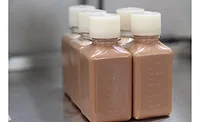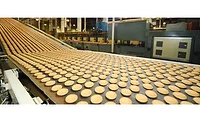Exclusive interview: Q&A with Vital Vio on sanitation and safe food environments

Food Safety Strategies recently got the chance to talk to Kristin May, chief commercial operations officer, Vital Vio, about bacteria in food environments and best sanitation practices.
Food Safety Strategies: What are some of the best ways to kill bacteria in a food environment?
Kristin May: The best defense is a layered approach to disinfection. Traditional, intermittent sanitization methods (such as cleaning equipment with chemicals and disinfectants, or using UV light before / after food is processed) alone are no longer the most effective way to kill germs in the food processing realm. In fact, they’re only able to kill bacteria at the time of disinfection. In between sanitization interventions, bacteria will undoubtedly form, colonize and spread, leaving workers and consumers at risk until the next wave of disinfection. The best approach to protecting our food from harmful bacteria is to introduce and layer in a new class of “continuous disinfection” technology that is always at work – killing germs with the help of visible, advanced LED lighting technology directly in the food processing environment. Unlike UV or chemicals, this technology is safe to be used 24/7/365, creating a continuous, multi-layered germ defense system that creates, and sustains an inhospitable environment for bacteria, endospores, fungi, preventing the regeneration and spread of germs.
FSS: Why is it best to not use UV in sanitation?
KW: Ultraviolet (UV) light is an extremely powerful method of disinfection, but it’s also especially dangerous to humans. In the case of food processing, while it is an appropriate intervention in many circumstances, there are factors to be considered, such as the damage it can potentially cause to plastic containers, packaging, processing belts causing them to deteriorate, become brittle and crack under its powerful rays. Secondly, UV light poses a risk for both the food being packaged and the employees managing the technology. It directly impacts the DNA in people, animals and plants, along with the bacterial cells. Light in the visible light spectrum, specifically at a frequency of 405nm, on the other hand, is harmless to humans, but just as devastating to bacteria. Additionally, the ability to tune an LED light to this specific frequency that can be used safely around the clock, (while UV must be used sparingly) creating an environment that is continuously inhospitable to germs and their growth. This continuous nature, along with it being safe, goes above and beyond the existing limitations of UV sterilization.
FSS: Any suggestions for food/beverage producers on how to maintain a safe/non-bacterial working environment?
KW: Food and beverage producers should develop a layered disinfection protocol that includes this new “continuous disinfection” technology to more completely clean and maintain the cleanliness of their environments. In short, a non-bacterial working environment is all about finding the best ways to be proactive about prevention, rather than being reactionary. In addition to traditional cleaning and sanitizing of all surfaces in a food processing facility, continuous disinfection technologies are the ideal complement to food processing and preparation, ensuring producers have a truly holistic and layered approach to killing potentially harmful germs.
Looking for quick answers on food safety topics?
Try Ask FSM, our new smart AI search tool.
Ask FSM →
FSS: When was Vital Vio founded, and how has it helped in the food safety industry?
KW: Vital Vio was founded in 2013 when the grandmother of our founder, Colleen Costello, was diagnosed with a hospital-borne MRSA infection. After some research, it became apparent to Colleen that this wasn’t an isolated incident, as one in 25 patients contract a healthcare-related bacterial infection in hospitals. With a background in biomedical engineering, she built a team and began researching smarter ways to manage bacteria levels, leading to the development of Vital Vio’s patented White Light Disinfection(R) solution. After initially launching in the healthcare space, Vital Vio has moved into providing the same germ-killing technology to other industries that must stop bacterial infections from spreading, including restaurants, fitness centers and the food processing industry. Currently, Vital Vio’s continuous disinfection technology is being deployed in several areas in food processing, including fish processing and in beverage production where bacteria, mold and fungi are problematic.
FSS: How does Vital Vio work?
KW: Vital Vio is tuned to a precise spectrum of light, created with patented LED technology, and activates a photo-activation of a type of porphyrin molecule (that only exist in microorganisms such as bacteria, fungi, yeast and mold). Exposure to this frequency of light (405nm) directly excites these molecules, creating a build-up of Reactive Oxygen Species (ROS) and essentially explodes bacteria from the inside out, destroying any bacteria that is exposed to the light. The significant breakthrough of isolating light to this specific frequency has now begun to enter the food processing industry. Vital Vio provides two modes of lighting, both effective at killing germs - white light to provide high quality lighting like any LED in the work environment; and blue-violet light to drive increased disinfection. When left on, this light (white or blue-violet) continuously kills bacteria, preventing any germ colonies from forming and replicating.









